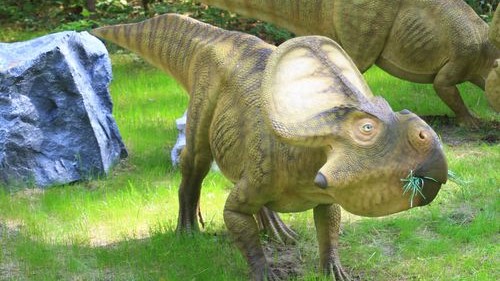Hundreds of millions of years ago, ancient reptiles called dinosaurs walked the earth. But another kind of ancient reptile, a cousin of the dinosaurs, also shared the planet. They didn’t walk the earth, though… they flew its skies! These prehistoric flying reptiles were pterosaurs.
Pterosaurs lived on earth for about 150 million years before dying out about 66 million years ago. Over that time, the earliest pterosaurs evolved into different species of pterosaurs that varied widely. Some pterosaurs had complicated crests on their head. Some had long tails, and others had short tails. And while some pterosaurs were as small as sparrows, others were as large as planes. But one thing that united all pterosaurs was their ability to fly. Pterosaurs were the first animals after insects to fly using their own power. They did not just jump or glide on the wind. Rather, they flapped their wings to travel by air.
How did pterosaurs take to the skies? The answer lies in the structure of their bones. Pterosaurs’ wings evolved from the front legs of their ancestors that lived on the ground. Over time, the bones in those ancestors’ arms and hands got longer. One finger bone got especially long. These long bones held up the skin that made up the pterosaurs’ wings.
Pterosaurs’ wing bones also were hollow tubes. The walls of the bones were extremely thin. The bones themselves were flexible and light, but strong. Because these bones were strong and light, they allowed pterosaurs to get off the ground and stay in flight. That’s how such large pterosaurs as the Quetzalcoatlus, which had a wingspan of about forty feet, were able to stay aloft!









